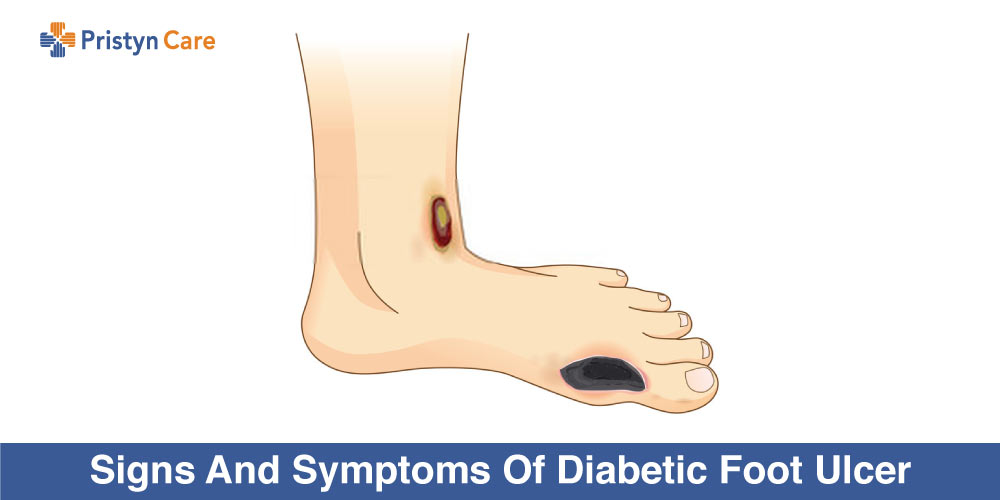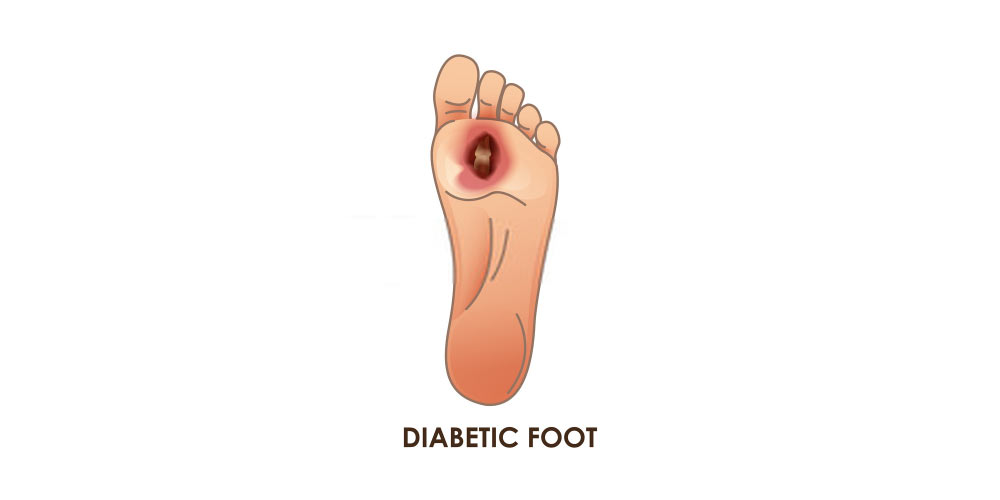
A diabetic foot ulcer is a major complication that comes with diabetes mellitus. Various health surveys reflect that more than 420 million across the globe have acquired diabetes.
The complication of a diabetic foot ulcer arises due to the uncontrolled sugar level in diabetic people. The uncontrolled sugar damages the veins and the nerves in the legs (especially more common in the foot). This results in the forming of diabetic foot ulcers.
Diabetic foot ulcers can have serious ill effects on your health. That’s why diabetic people must remain careful and look out for the signs and symptoms of diabetic foot ulcers.
Table of Contents
Here are the signs and symptoms of diabetic foot ulcers:
Blisters, Corns, and Calluses
Blisters, corns, and calluses are quite common in people with diabetes. But it may come as a surprise to you that these can initiate the development of a diabetic foot ulcer. A blister, corn or callus that does not heal even after a considerable time is very often linked with the development of diabetic foot wounds.
Purulent discharge accompanying foul smell
Purulent discharge from the wound is one of the early signs of diabetic foot ulcers. This discharge is often accompanied by a foul odor. These signs usually indicate the presence of microbial action in the wound. If left unattended, it can result in the wound getting infected.
Unusual swelling and redness
In the early stages of diabetic foot ulcers, you may notice bulging of the skin around the wound. The area becomes swollen and visibly red.
Warm sensation around the wound
Another symptom that points towards diabetic foot ulcer is a sensation of warmth around the affected area. Warm sensation in the foot is a very common sign of diabetic foot ulcer caused due to peripheral neuropathy (damage to the nerves).
Pain and firmness on touching the wound
On touching the wound or ulcer, you may experience some pain. You may also notice thickening and firmness of the skin around the ulcer. Moreover, a burning sensation or itching in and around the ulcer is also very common.
Forming of black tissue around the ulcer
Many a time, in the cases of diabetic foot wounds, the formation of a black tissue around the ulcer occurs. This black tissue is called an eschar. Eschar formation is a result of a lack of healthy blood supply to the ulcerated region.

Numbness around the wound
Numbness is a major sign indicating that something is wrong with the foot. Although due to peripheral neuropathy, numbness is very common in diabetic people, it can also be a sign of partial gangrene caused due to diabetic foot ulcer.
Fever and chills in serious cases
Fever higher than 101.5°F along with chills is a sign of a serious infection. It indicates that the infection in the ulcer is becoming widespread. It can even lead to limb-threatening or life-threatening complications.

Timely treat these symptoms of diabetic foot ulcers
There is no way that you can leave the signs and symptoms of diabetic foot ulcers untreated. Once these ulcers form they don’t heal on their own due to impaired blood flow. Thus, you have to do something about it.
Wise things to do to get rid of diabetic foot ulcers
Reach to a specialist doctor
As soon as you notice the symptoms of diabetic foot ulcer, consult a specialist doctor. The earlier you seek medical help, the less complex the treatment will be.
Your doctor will conduct some physical, imaging, and blood tests to assess the severity of diabetic foot ulcers in your case. Depending upon the seriousness, the doctor will suggest a suitable treatment option.
Debridement for diabetic foot ulcer
If the diabetic foot ulcer is diagnosed in the initial stages, debridement can prove to be quite successful in speeding up the healing of the ulcer. Debridement is an intervention procedure in which the doctor uses a scalpel to remove the dead and infected tissues from in and around the ulcer. Then, the doctor covers the wound with a sterile bandage and you can go home. You just need to replace the bandage with a new one at regular intervals of time.
You can also take help of home remedies for diabetic foot ulcers for relief
- Use aloe vera gel in natural form on the foot ulcer. This will provide instant relief from the burning sensation and irritation in the affected skin.
- A cup of coffee can boost the blood flow and bring an enhanced immune response from the body against the foot ulcer.
- Dandelion root powder, fenugreek, and garlic can cure skin infections, including diabetic foot ulcers.
Honey ofcourse is the most widely used home remedy for a diabetic foot ulcer. You can use honey for dressing the foot ulcer. The antibacterial and anti-inflammatory properties of honey speed up the healing process of diabetic foot ulcers.
The Bottom Line
Keep a regular check on your blood sugar levels and look out for the symptoms of diabetic foot ulcers. Timely treatment will save you from a lot of worries and health complications.
Also, if you are dealing with the problem of the diabetic foot, you can get in touch with us for expert consultation. The doctors at Pristyn Care ensure the best treatment and permanent solution for diabetic foot ulcers. Your healthy life is our priority.
Also read:







